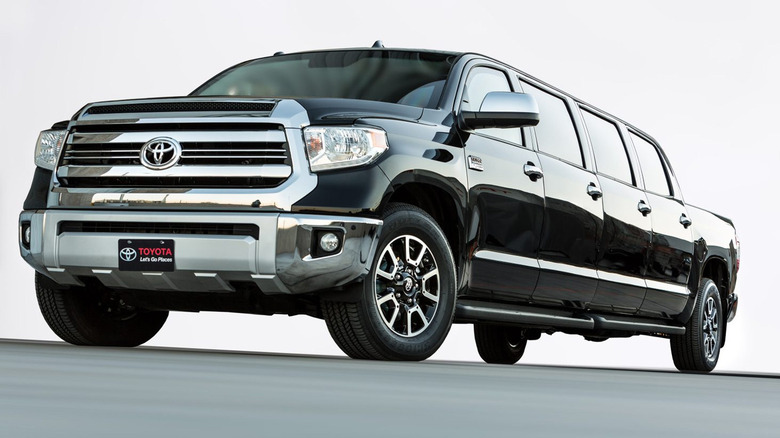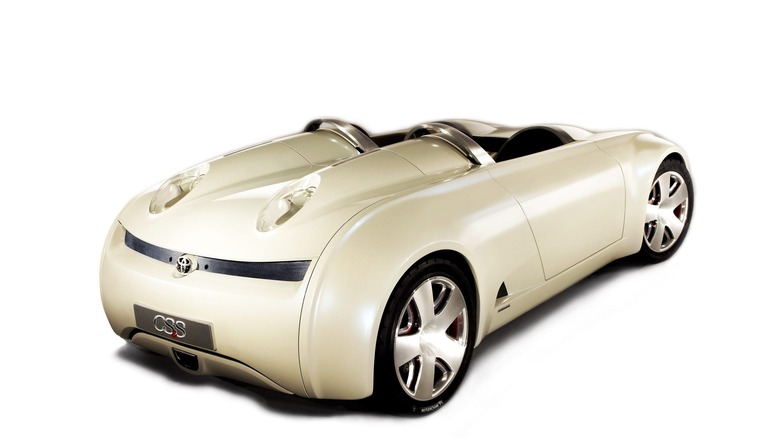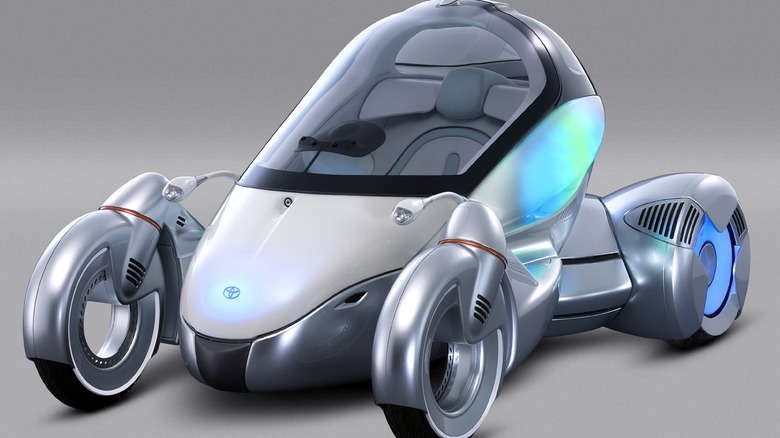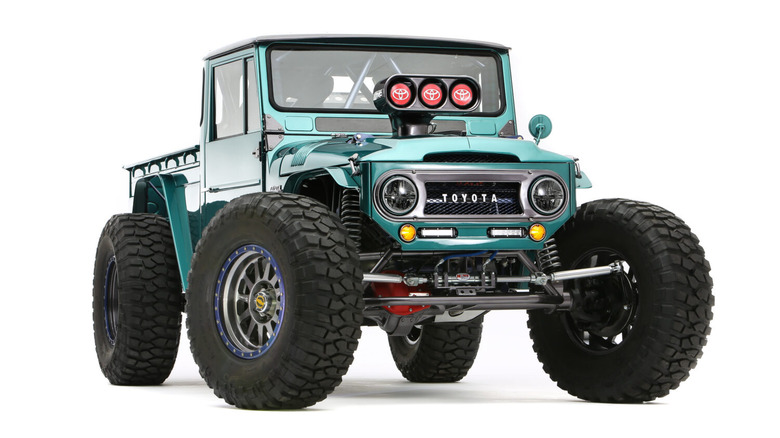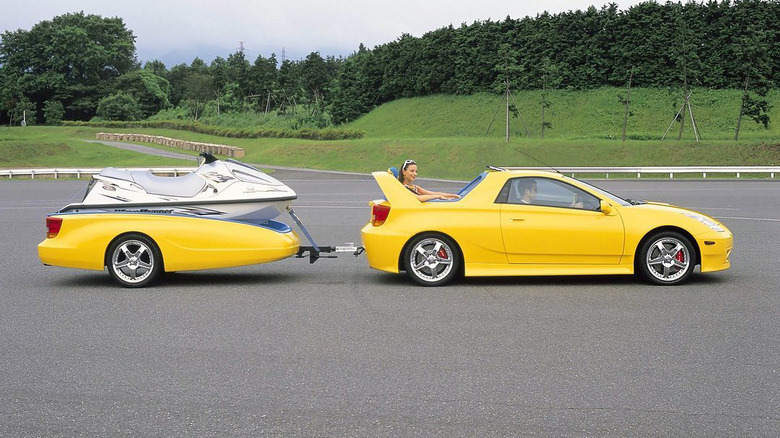5 Toyota Concept Cars That Made Us Ask 'What Were They Thinking?'
Toyota outsold every other automaker on the globe last year, moving more than 8.5 million cars and trucks. Practical models like the Camry, RAV4, Corolla, and Hilux were among the world's 10 best sellers, upholding Toyota's traditional reputation as a manufacturer of dependable, economical, and practical vehicles for everyday use. But between the production of the first Toyoda model AA in 1936 and the much more recent output of the two millionth Prius, Toyota has also found time to design some outlandish concept vehicles.
Some of these concepts involved cutting-edge green fuel technologies, while others were inexplicable modifications of existing Toyota vehicles meant to expand its capabilities, broaden its appeal, or simply stimulate the imagination. Other concepts were meant to create a niche where none existed, but all of these proposed machines have one thing in common: they're weird.
Some have no apparent practical purpose, others are just plain offensive to the eye, and some seem to be difficult to operate. With all that in mind, let's look at five of the strangest concept cars that Toyota has proposed in its nearly 100 years of automotive design and manufacturing.
CS&S
Toyota introduced the Prius in Japan in 1997, and North America in 2000, and the redesigned 2023 Prius represents the evolution of 25-plus years of hybrid technology. Back in 2003, when hybrid drive vehicles were still a relative novelty, Toyota introduced the CS&S concept car at the Frankfurt Auto Show. The CS&S was a convertible roadster with a 1.5-liter gas engine that drove the rear wheels and an electric motor that drove the front wheels.
Along with a body design that landed halfway between the space age and Art Deco, the CS&S had some advanced and unnecessary technology — like holographic controls for the infotainment and climate control systems and pod-like seats that folded forward to cover the steering wheel. Toyota also promised that the CS&S would have internet connectivity, inviting more driver distractions a few years ahead of the dawn of the smartphone boom.
The CS&S certainly looks cool, but the "Star Wars" inspired design and features and apparently minuscule ground clearance (Toyota wisely never released an actual figure) would have made this car a nightmare for real-world city or suburban driving had it ever made it to production.
PM Concept
Another odd design that made it past the sketchbook stage in 2003 was the PM, which stood for "Personal Mobility." This strange single-seat vehicle was displayed at that year's Tokyo Motor Show. It had an egg-shaped driver's enclosure separated from the four individual wheel pods and could be raised or lowered according to speed and other conditions.
The PM had antenna-like headlight stalks and wheels that moved independently from one another, allowing it to rotate in place. It was powered by an electric motor mounted in the rear and controlled using what Toyota called in its press release a "grip-type drive controller" that managed steering, acceleration, and braking. Like the CS&S, the PM had a 3-D holographic instrument display.
The computerized system at the heart of the PM also allows it to communicate with others around it, allowing you to link up with fellow PM drivers while on the road.
Toyota touted this "platooning" feature to lead other drivers to your favorite shops and restaurants. However, the prospect of having your car take an unexpected detour to a clothing store or cafe based on someone else's whim seems like a dystopian nightmare, especially once a swarm of identical bug-like vehicles joins you.
FJ Bruiser
To some purists, Toyota committed blasphemy when it used the legendary FJ designation for the FJ Cruiser model it introduced in 2006. If any of those traditionalists were at the October SEMA (Specialty Equipment Market Association) show in Las Vegas, they likely left Toyota's display scratching their heads in puzzlement.
There, Toyota presented the FJ Bruiser, which has the sharp lines of an FJ45 Land Cruiser hiding a customized version of the 358 cubic inch V8 that is used in Toyota's NASCAR racers.
The Bruiser's transfer case has four 2WD speeds and four 4WD speeds, allowing it to crawl at 12 mph and fly along at 165 mph while the engine turns at 7,000 rpm. Even with a full roll cage, driving a vehicle with 42-inch tires at 165 mph seems like a suicide mission, despite Toyota's claims in a press release that the FJ Bruiser "is a special project prototype vehicle, modified with parts and/or accessories not available from Toyota that may void the vehicle's warranty, may negatively impact vehicle performance and safety, and may not be street legal."
Tundrasine
Toyota trucks like the Tacoma, Hilux, and Tundra have traditionally been among the brand's best sellers, accounting for nearly a million units sold worldwide last year. It's doubtful many Toyota truck owners, if any, sat behind the wheel of their trucks and said, "Gee, it would be nice if I could fit 10 more people in here." But for some reason, Toyota felt the need to assemble a 26-and-a-half-foot-long Tundra for the 2015 SEMA show.
The eight-door black behemoth with a custom leather interior began life as a Tundra CrewMax 1794 Edition 4x4 with a 5.7 liter V8 under the hood before having its wheelbase stretched to 235.9 inches at Toyota's assembly plant in San Antonio.
"They say everything's bigger in Texas," Toyota spokesman Steve Appelbaum said in a press release, "and the Tundrasine really drives that point home—or anywhere you want to go."
While the Tundrasine (a portmanteau of "Tundra" and "limousine") may be able to take you and two basketball teams anywhere in style, finding a place to park it would be a nearly impossible task. With gas prices on the rise, another nightmare to consider is the Tundrasine's nearly 8,000-pound curb weight. That would cut back on the base 5.7-liter CrewMax Tundra's already subpar 15 mpg combined fuel efficiency rating, making it an atrocious choice for daily driving, not to mention a huge chore to keep clean both inside and out.
Celica cruising deck
Toyota made more than four million Celicas between 1970 and 2006, including one very odd copy based on the seventh-generation model, which was produced especially for the 1999 Tokyo Auto Show. The Celica Cruising Deck had rumble seats in place of the rear hatch and a glass partition just in front of them that could be raised and lowered. Like that generation's standard version, it was powered by a 1.8-liter I4 engine that sent its 187 horsepower to the front wheels through a six-speed manual transmission.
Rear seat passengers could relax against the padded headrests integrated with the rear wing, and the Celica Cruising Deck had a tow hitch hooked to a matching trailer with a jet ski.
The rear seats folded into the cargo area floor, and the tailgate had a hinge on the right side to allow for easy loading and unloading, but this was a one-off version created exclusively for the show and never saw production.
That was likely due to the glaring safety concerns of hauling passengers in the back of an open Celica and the difficulty of towing a trailer with a front-wheel drive car weighing 2,580 pounds.
